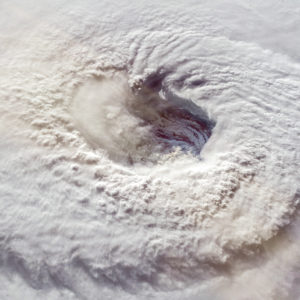For an alternate point of view see: Counterpoint: Climate Change Fear-Mongering Isn’t Working Anymore
The Colorado State University Tropical Weather and Climate team made a news splash on April 4, forecasting a disturbingly above-average number of storms expected in this year’s hurricane season. The forecast was also notable in that it was announced earlier in the year than ever by the hurricane forecasting team at CSU, which has been making annual forecasts of the year’s expected hurricane activity for 39 years.
The Colorado team is considered among the two most trusted and sophisticated forecasting groups, and the other is the National Oceanic and Atmospheric Administration. Other forecasters that use complex models to predict hurricane activity, such as AccuWeather, concur with the CSU and NOAA predictions. AccuWeather expects this year’s hurricane season to be “super-charged.”
Notwithstanding the methodological rigor and success record of the forecasters — who incorporate into their models 70 years of historical data on factors including sea surface temperatures, sea surface pressure, and wind shear — conspiracy-peddling voices will politicize the issue of how many hurricanes are expected. Such bearers of misinformation maintain that NOAA intentionally amplifies its forecasts of hurricane activity to drive a climate change agenda.
One such voice is that of conservative commentator Matt Drudge, who once infamously maintained NOAA’s Hurricane 2017 Matthew forecast was intentionally inflated. Another was Rush Limbaugh, who declared, without evidence, “It’s in the interest of the left to have destructive hurricanes because then they can blame it on climate change, which they can desperately continue trying to sell.” Commentator Tucker Carlson also joined the conspiracy caucus, declaring the government hypes warnings about hurricanes because private interests profit from sales of water and batteries.
Yet another voice, emanating from a think tank, states that there “has been no long-term trend in the strength or frequency of hurricanes, tornadoes, U.S. floods and drought.” This flies in the face of R Street Institute research. Observing that pronouncements on natural catastrophes too often were politically influenced, we undertook a fact-based, data-based project to compile conclusions on natural catastrophe frequency, severity and attribution reached by 18 noted meteorologists, climate researchers and data scientists. Our published study found the 18 sources t largely agree that catastrophe frequency and severity have increased.
As for what we are facing now, the CSU unit forecasts 23 named storms for the 2024 Atlantic hurricane season, spanning June 1 to November 30. This is significantly higher than the average of 14.4 between 1991 and 2020. It forecasts 11 hurricanes this season, up from the historical average of 7.2. It expects five of the 11 to reach major hurricane strength (category 3, 4, or 5), with sustained winds of 111 mph or more.
The CSU forecasters found that the combination of conditions in 2024 (sea surface temperature, sea level pressure, vertical wind shear (change in wind direction and speed) and the El Niño effect (water warming in the central and eastern tropical Pacific) resemble those in past years with active Atlantic hurricane seasons: 1878, 1926, 1998, 2010 and 2020.
Misinformation promulgated by the likes of Limbaugh and Carlson can be dangerous. To the extent people in harm’s way ignore warnings about the threat of coming dangers they face from destructive storms, lives may be lost. Another source of dangerous misinformation is random postings on social media platforms by people lacking subject matter expertise.
In January 2024, an actress posted a warning, spreading panic, of an apocalyptic approaching California rainstorm, which did not exist. This recalled the “Sharpie hoax” of 2019 when then-president Donald Trump displayed a map of the expected path of Hurricane Dorian. The map included an extension of the path hand-drawn with a Sharpie indicating that the storm would strike Alabama, breaking a law prohibiting the publication of a falsified official weather forecast.
The 2024 Atlantic hurricane season will likely not include exactly 23 named storms and 11 hurricanes. There is, however, a high degree of confidence that the model-driven forecast will be directionally correct. After all, as the British statistician George E.P. Box once said, “All models are wrong, but some are useful.”
Storms have consequences. Mighty winds care not a whit about the ideology of those whose houses they destroy. So beware this year of conspiracists soft-pedaling threats that are all too real.
Please follow DVJournal on social media: Twitter@DVJournal or Facebook.com/DelawareValleyJournal

